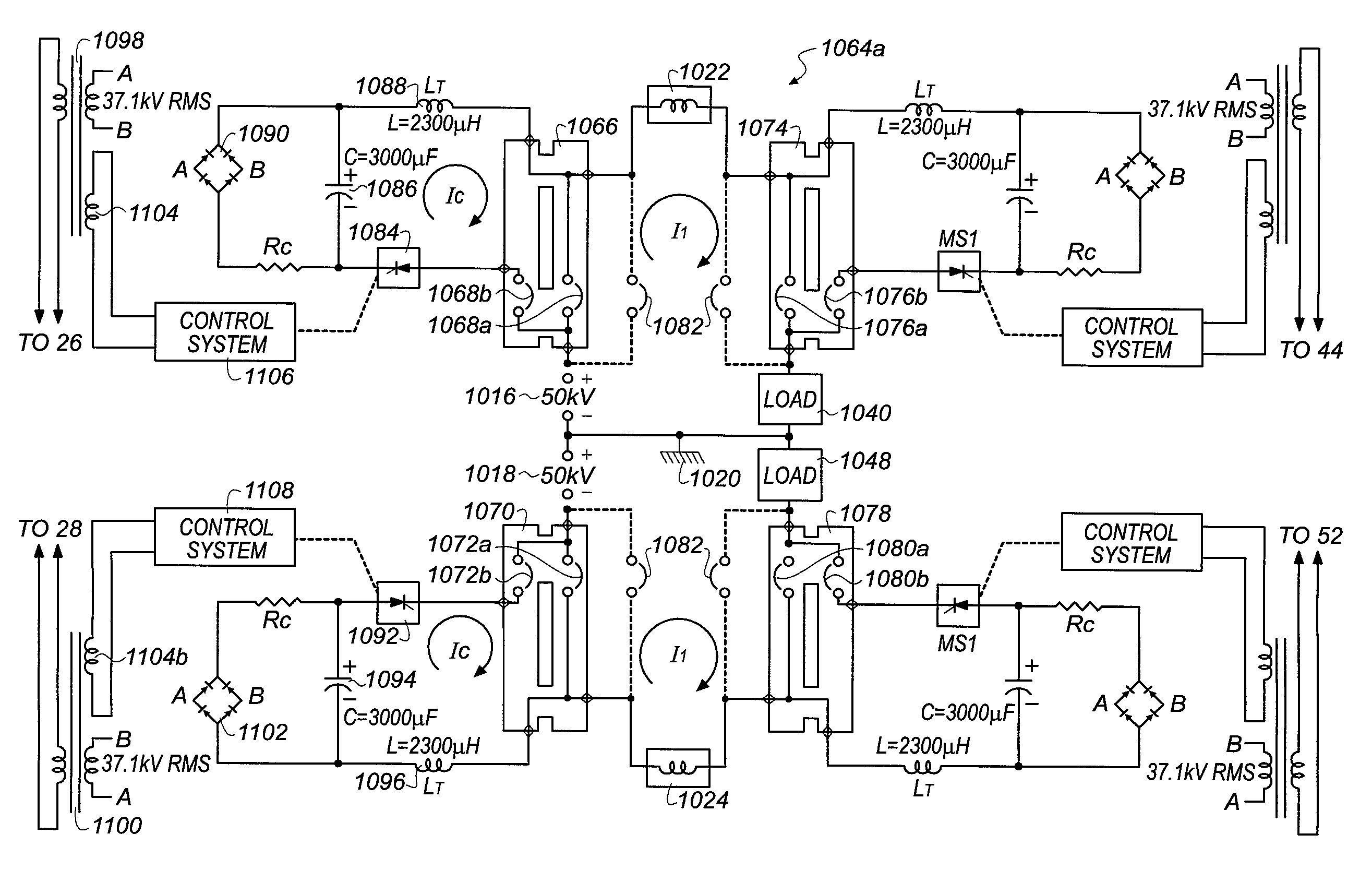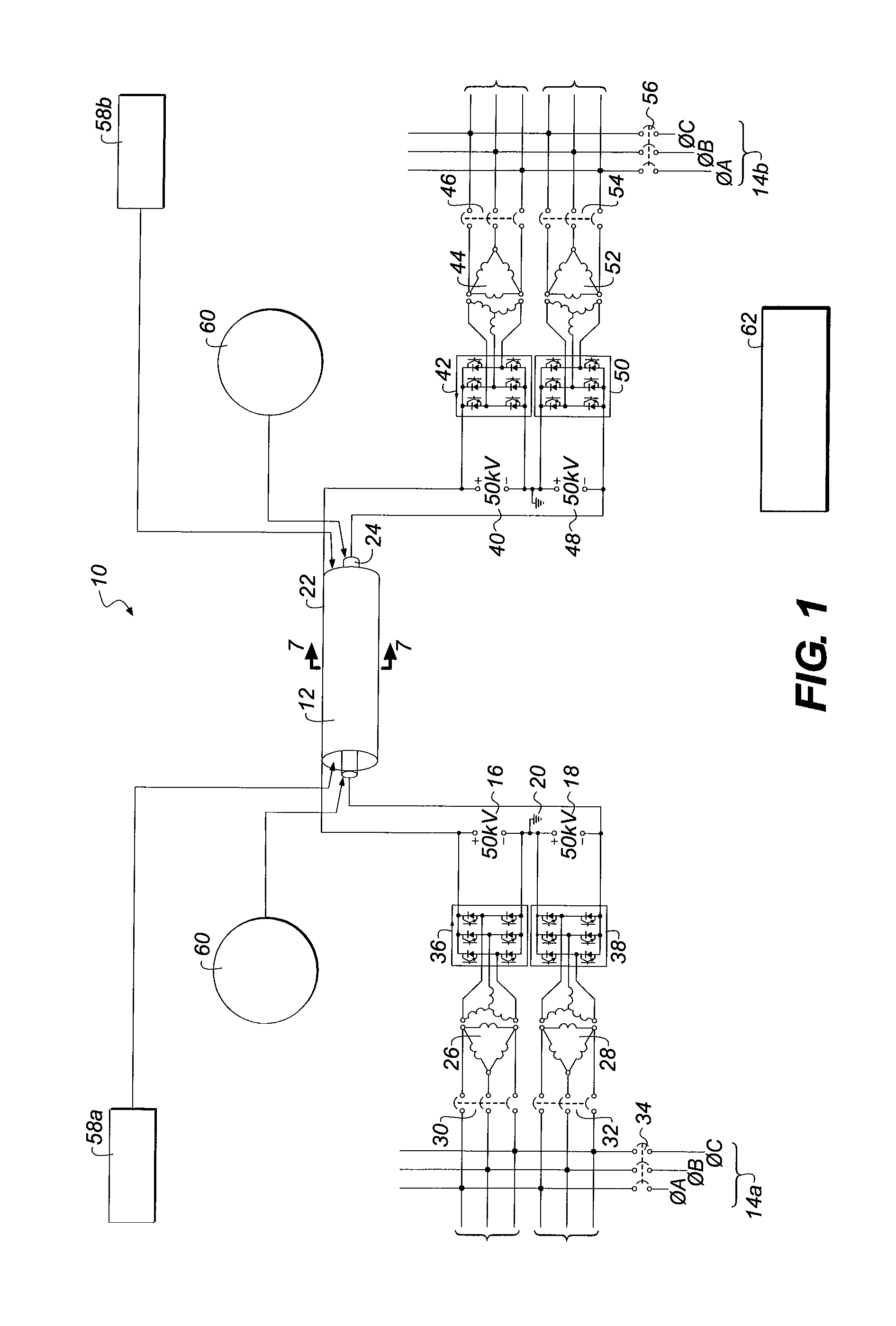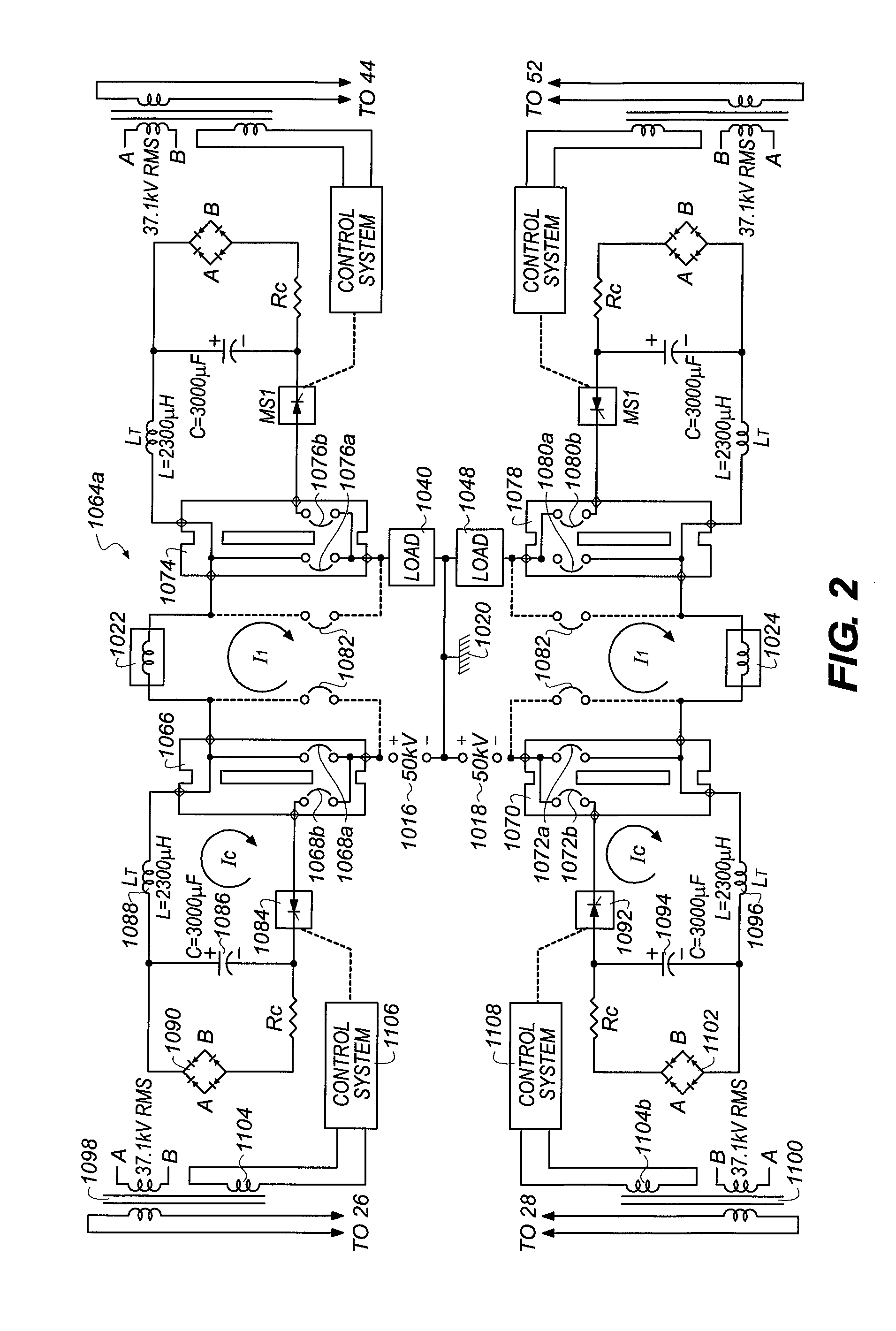Superconducting direct current transmission system
a direct current transmission and superconducting technology, applied in the direction of superconducting magnets/coils, magnetic bodies, connection contact material, etc., can solve the problems of limiting the ability of energy providers, failure of any one system, and numerous limitations and drawbacks of existing technology, so as to reduce the enormous i2r power loss and adequate chilling
- Summary
- Abstract
- Description
- Claims
- Application Information
AI Technical Summary
Benefits of technology
Problems solved by technology
Method used
Image
Examples
Embodiment Construction
DC Superconducting Transmission Line Segment Protected by Three Phase AC Circuit Breakers
[0035]The proposed objective is to provide a new and unique way of transporting 50 kA DC at a voltage of 100 kV DC while minimizing or eliminating I2R losses through the use of superconductivity. The creation of a transmission segment which combines three-phase AC circuit breakers for protection and isolation with a coaxial superconducting transmission line meets the objective. The disclosed embodiment describes the 50 kA, 100 kV requirements, though choosing higher voltage and reduced current levels are contemplated within the scope of the invention.
[0036]Referring to FIG. 1, a direct current superconducting transmission system 10 includes a 5,000 megawatt coaxial transmission segment 12 coupled between terminals of a local electrical grid or network 14a. The superconducting transmission system 10 includes a 50 kV positive voltage source 16 and a 50 kV negative voltage source 18, which share a...
PUM
| Property | Measurement | Unit |
|---|---|---|
| DC voltage | aaaaa | aaaaa |
| length | aaaaa | aaaaa |
| voltage | aaaaa | aaaaa |
Abstract
Description
Claims
Application Information
 Login to View More
Login to View More - R&D
- Intellectual Property
- Life Sciences
- Materials
- Tech Scout
- Unparalleled Data Quality
- Higher Quality Content
- 60% Fewer Hallucinations
Browse by: Latest US Patents, China's latest patents, Technical Efficacy Thesaurus, Application Domain, Technology Topic, Popular Technical Reports.
© 2025 PatSnap. All rights reserved.Legal|Privacy policy|Modern Slavery Act Transparency Statement|Sitemap|About US| Contact US: help@patsnap.com



